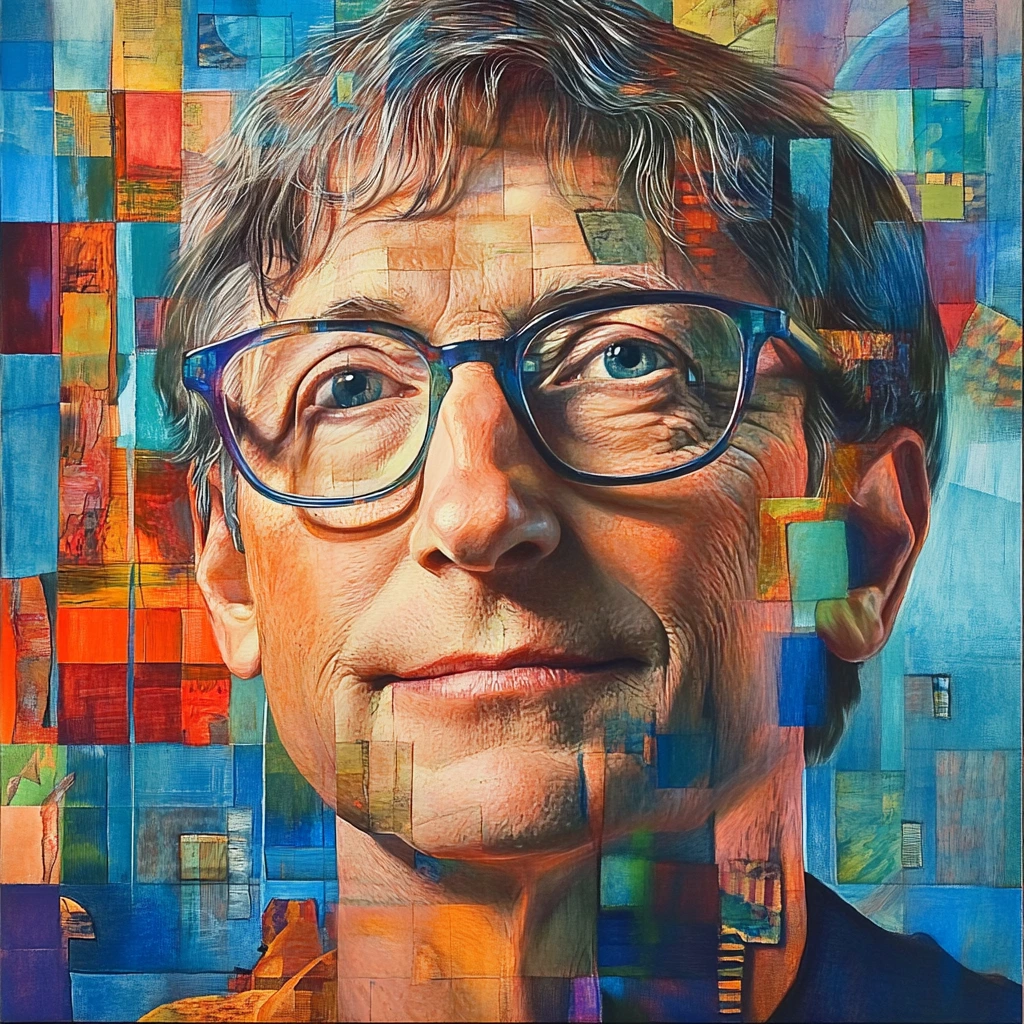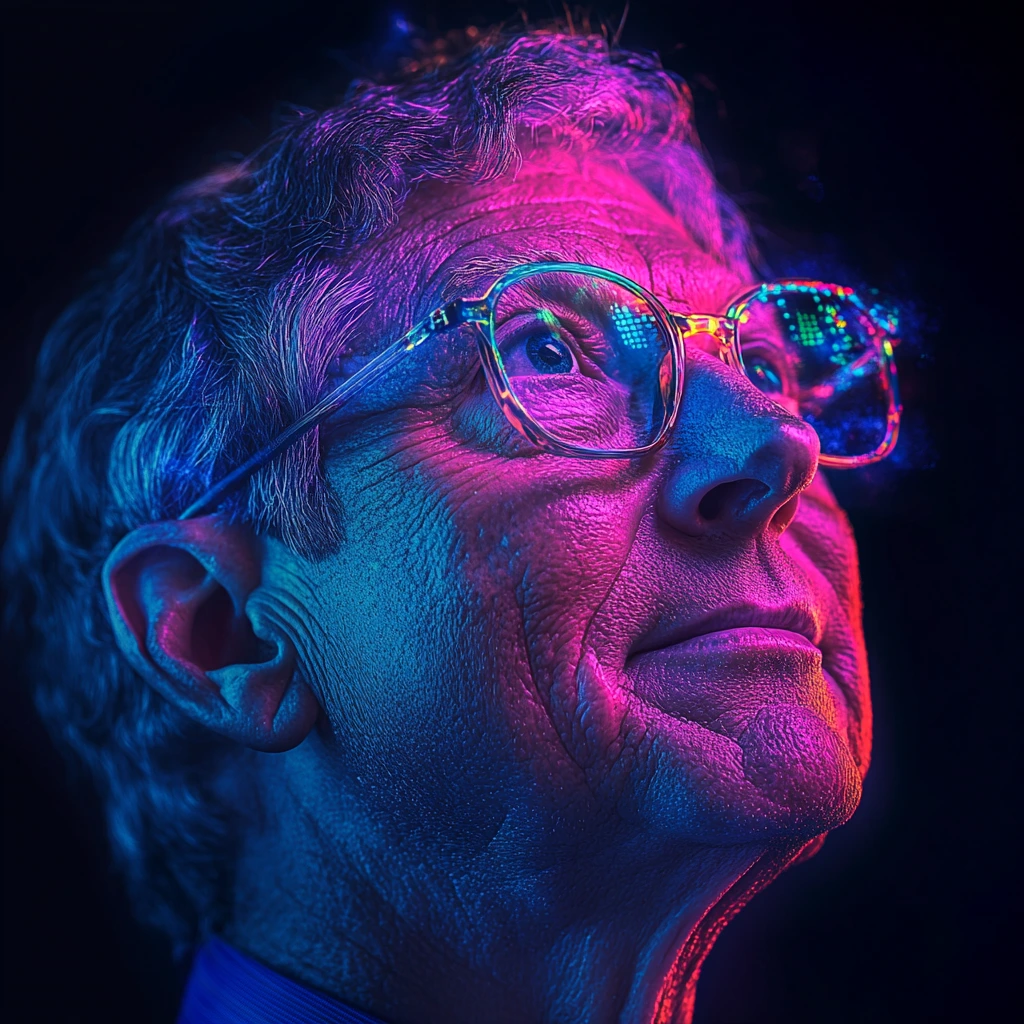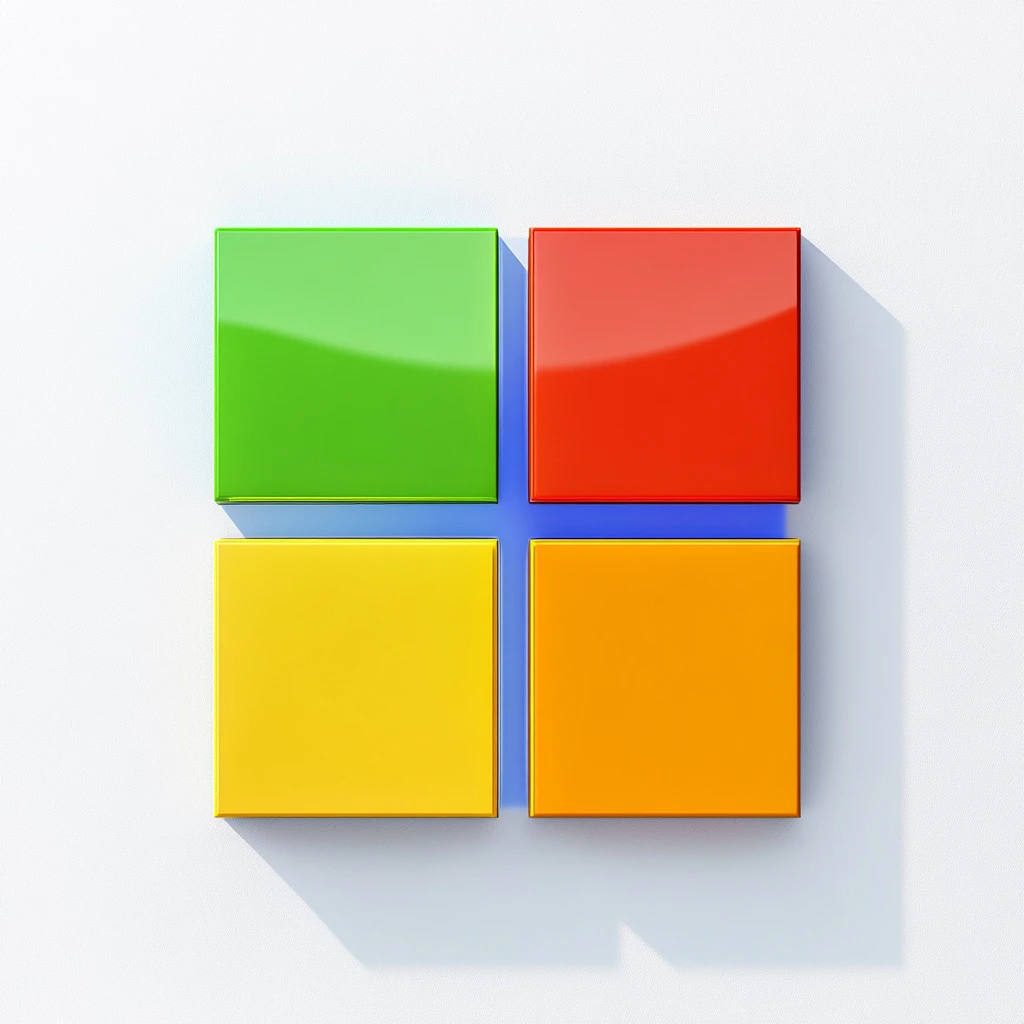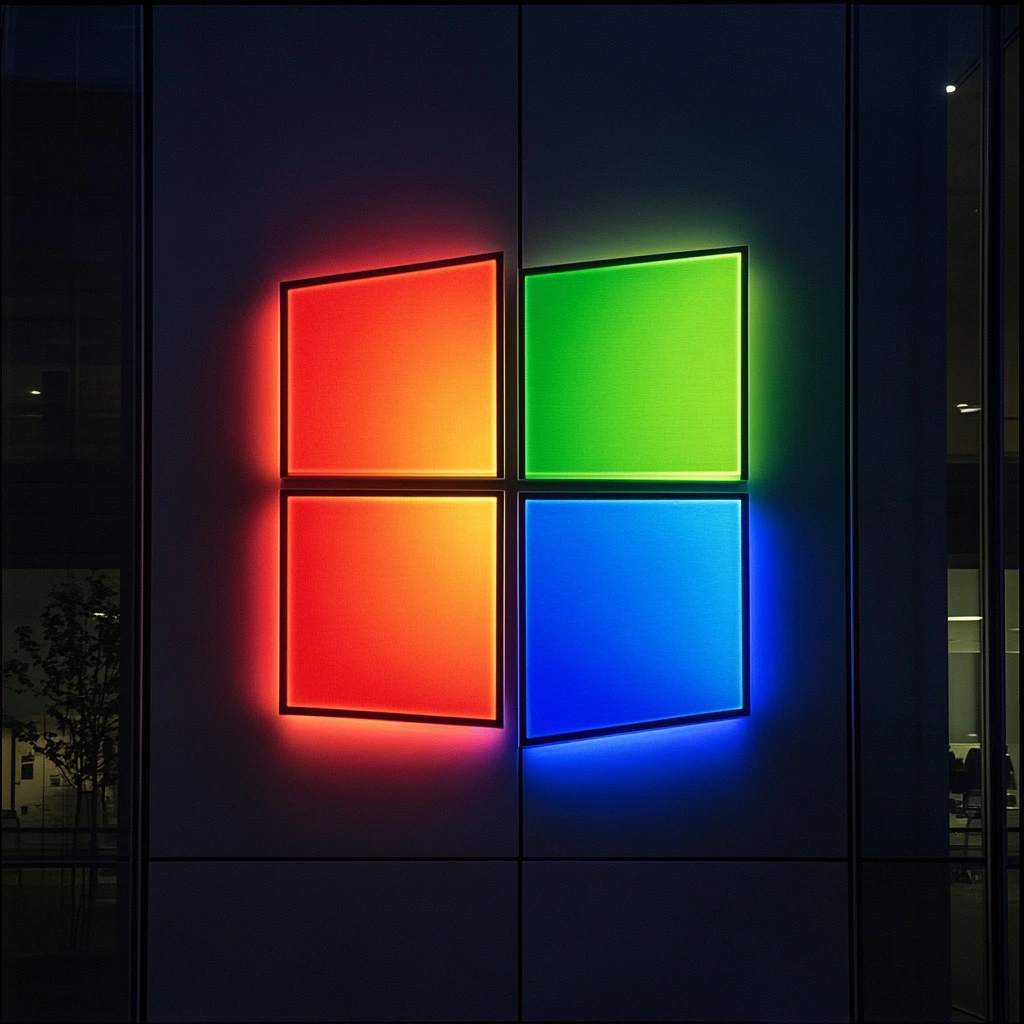FAs Microsoft marks its 50th anniversary, co-founder Bill Gates reflects on a journey that revolutionized the world of technology. From a humble beginning in a small garage to becoming a global tech giant, Microsoft’s legacy is deeply woven into the fabric of the digital age. Under Gates’ visionary leadership, the company not only brought personal computing into homes and businesses but also laid the foundation for countless innovations that continue to shape how we live, work, and connect today. This milestone is more than a celebration—it’s a tribute to the power of innovation, determination, and a bold vision that changed the world forever.

The Birth of Microsoft: A Dream That Changed the World
In the mid-1970s, two childhood friends—Bill Gates and Paul Allen—shared a bold vision: to put a computer on every desk and in every home. At a time when computers were massive, expensive machines reserved for large businesses and institutions, their dream seemed almost impossible. But in 1975, that vision took its first steps toward reality with the founding of Microsoft.
The company began with a simple yet groundbreaking idea: to develop software for the Altair 8800, an early personal computer. Gates and Allen created a version of the BASIC programming language tailored for the Altair, marking Microsoft’s first major breakthrough. Operating out of a small office in Albuquerque, New Mexico, their passion, innovation, and technical brilliance quickly set them apart.
What started as a small software company soon began to redefine the entire tech industry. With the introduction of MS-DOS in the early 1980s—followed by the launch of Windows—Microsoft laid the foundation for modern personal computing. The company’s early success was not just about writing code; it was about imagining a digital future that didn’t yet exist and building the tools to bring that future to life.
Microsoft’s birth was more than a business startup—it was the ignition of a technological revolution. Gates and Allen’s dream didn’t just change the world of computing; it reshaped the way people communicate, learn, and do business. Their story remains one of the most inspiring testaments to how a simple idea, backed by determination and innovation, can transform the world.

Bill Gates Reflects on 50 Years of Innovation
As Microsoft celebrates its 50th anniversary, Bill Gates has taken a moment to look back on the incredible journey that began with a shared dream and a lot of code. In his reflections, Gates emphasizes not just the company’s growth, but the larger mission that has guided Microsoft for five decades: empowering people through technology.
From the early days of BASIC to the transformative launch of Windows, Office, and the cloud-powered future with Azure, Gates has witnessed firsthand how innovation can reshape industries and impact billions of lives. He recalls moments of intense challenge—competing in a rapidly evolving market, responding to technological shifts, and staying ahead of the curve. Yet through it all, the core values of curiosity, problem-solving, and a relentless drive to create tools that make life easier have remained constant.
Gates also acknowledged the role of collaboration and a strong team culture in Microsoft’s longevity. “No one builds something this meaningful alone,” he remarked. “I’ve had the privilege of working with some of the most brilliant minds in tech.”
Looking ahead, Gates is optimistic about what the future holds. He highlights artificial intelligence, climate innovation, and expanded digital access as the next frontiers of progress. While he’s no longer at the helm of Microsoft’s day-to-day operations, his influence continues through his philanthropic work and his ongoing commitment to using technology as a force for good.
As the world celebrates 50 years of Microsoft, Gates’s reflections serve as a powerful reminder: true innovation isn’t just about creating new products—it’s about shaping a better future for everyone.

Microsoft’s Milestones: Shaping the Digital Era
Microsoft’s journey over the past five decades is defined by a series of groundbreaking milestones that not only marked the company’s evolution but also had a profound impact on the entire digital landscape. From its humble beginnings to its position as a global technology leader, these key moments showcase how Microsoft has helped shape the digital era.
1. The Launch of MS-DOS (1981)
One of Microsoft’s earliest and most pivotal milestones was the development and release of MS-DOS (Microsoft Disk Operating System) in 1981. MS-DOS became the foundation for personal computing, enabling computers to operate efficiently and paving the way for Microsoft’s dominance in the software market. It set the stage for Microsoft’s later successes and marked a turning point in the democratization of personal computing.
2. Windows 95: A Game-Changer in User Experience (1995)
The introduction of Windows 95 in 1995 was a revolutionary moment in computing. With its user-friendly interface, the Start Menu, and the introduction of plug-and-play hardware support, Windows 95 made personal computers accessible to millions. Its widespread adoption marked the beginning of the internet age for many users and solidified Microsoft’s place as the leader in desktop operating systems. The success of Windows 95 demonstrated Microsoft’s ability to not just innovate, but to completely redefine how people interacted with technology.
3. Microsoft Office Suite (1989)
Microsoft’s Office Suite, launched in 1989, quickly became the go-to productivity software for businesses and individuals alike. With applications like Word, Excel, and PowerPoint, Office revolutionized the way people created documents, analyzed data, and delivered presentations. As businesses and home users increasingly relied on these tools, Microsoft solidified its presence as an essential player in the software industry.
4. The Rise of Cloud Computing with Azure (2010)
The launch of Microsoft Azure in 2010 marked the company’s shift from traditional software to cloud-based services. With Azure, Microsoft became a major player in the cloud computing market, providing businesses with scalable computing resources, data storage, and advanced analytics. The cloud revolution has since transformed industries, allowing companies of all sizes to innovate faster, collaborate more effectively, and reach new customers globally.
5. Acquisition of LinkedIn (2016)
In 2016, Microsoft acquired LinkedIn for $26.2 billion, marking one of the largest tech acquisitions in history. This move solidified Microsoft’s position as a leader in both business and professional networking, enabling the company to integrate LinkedIn’s tools and data with its own products. This acquisition enhanced Microsoft’s reach in the business world, providing greater connectivity and collaboration tools for professionals.
6. Microsoft’s Commitment to Sustainability and AI (2020s)
In recent years, Microsoft has continued to innovate with a focus on sustainability and the future of artificial intelligence. In 2020, the company set a bold goal to become carbon negative by 2030 and remove all of its historical carbon emissions by 2050. Through advancements in AI and machine learning, Microsoft is helping to tackle global challenges in healthcare, climate change, and accessibility. These initiatives not only demonstrate Microsoft’s leadership in the tech space but also its commitment to leveraging technology to create a positive impact on society.
These milestones represent just a few of the many ways Microsoft has influenced the world of technology. The company’s continuous drive for innovation has shaped not only how we use computers but how we live and work in an increasingly digital world. With a relentless focus on the future, Microsoft is poised to continue its legacy of innovation for many years to come.

Looking Ahead: AI, Ethics, and the Future of Tech
As Microsoft celebrates 50 years of innovation, the company and its co-founder Bill Gates are keenly focused on the future—one shaped by artificial intelligence (AI), ethical considerations, and a deep commitment to solving some of the world’s most pressing challenges. While the past five decades have seen tremendous technological advancements, the next fifty years promise to bring even more profound changes, especially in the realm of AI, ethics, and sustainability.
The Rise of Artificial Intelligence
AI is already transforming industries, from healthcare to finance to entertainment, and Microsoft is at the forefront of these advancements. With the launch of tools like Azure AI and its deep integration of machine learning models, Microsoft is empowering businesses to use AI to drive innovation, improve efficiencies, and enhance customer experiences. The future of AI at Microsoft includes more intelligent systems that can understand natural language, automate complex tasks, and even assist in creative processes, from generating code to composing music.
However, as AI continues to evolve, so too does the need for responsible development and implementation. Bill Gates has emphasized that AI holds immense promise for society, but it must be harnessed in ways that promote fairness, accountability, and transparency. In his reflections, Gates has pointed to the importance of creating frameworks that ensure AI benefits everyone, not just a select few.
Ethics in Technology: A Growing Responsibility
As technology becomes more integrated into our daily lives, ethical concerns surrounding its use have become more urgent. Microsoft has made significant strides in developing ethical guidelines for the development and deployment of AI and other technologies. This includes commitments to privacy, data security, and ensuring that AI systems are designed to avoid bias and discrimination.
The company’s responsible AI initiatives, such as the creation of ethical AI principles, seek to ensure that technology is developed in a way that respects human rights, promotes inclusivity, and avoids unintended harm. Gates has long been an advocate for tech companies to take responsibility for their creations and for society to be proactive about addressing the ethical challenges posed by emerging technologies.
In the coming years, the tech industry will need to continue evolving its understanding of ethics in technology, especially as issues like data privacy, algorithmic bias, and automation become more prevalent. Gates believes that collaboration between governments, businesses, and academia will be key to addressing these challenges effectively and responsibly.
Sustainability and Tech for Good
Beyond AI and ethics, Microsoft is also focused on the intersection of technology and sustainability. The company’s ambitious climate goals, including its pledge to be carbon negative by 2030, showcase how tech companies can use their resources to make a positive environmental impact. Gates himself has long championed the role of innovation in addressing climate change, and he views technological solutions, like AI-powered environmental monitoring, as essential tools in tackling this global crisis.
In addition to addressing climate change, Microsoft is committed to making technology more accessible, ensuring that the benefits of innovation reach people in every part of the world. Whether it’s through increasing digital literacy, improving internet access in underserved areas, or creating more inclusive technologies, the company aims to make the future of tech one that serves everyone, regardless of their background or location.
The Next Era: A Unified Digital Future
Looking ahead, the future of technology will be defined by further integration between AI, cloud computing, and human-centered innovation. Microsoft, alongside other tech giants, is shaping a future where digital technologies are seamlessly embedded into our everyday lives—empowering individuals, businesses, and governments to tackle complex challenges and unlock new opportunities.
Bill Gates is optimistic about the potential of this unified digital future. He sees a world where technology can accelerate progress in science, education, healthcare, and more, but also recognizes that it must be steered in the right direction. As he put it, “Technology’s greatest potential is realized when it’s used as a tool to solve humanity’s biggest problems.”
The next fifty years hold boundless potential. With AI leading the charge and ethical considerations guiding the way, Microsoft and its leaders remain committed to using technology as a force for good—one that can build a more equitable, sustainable, and innovative world for all.

Global Celebration of Microsoft’s 50th Anniversary
As Microsoft reaches its 50th anniversary, the global celebration of this remarkable milestone reflects not only the company’s incredible journey but also its immense influence on the world. From small offices in Albuquerque to becoming one of the world’s largest and most influential tech companies, Microsoft’s anniversary is a moment of reflection, recognition, and celebration for millions of people worldwide who have been touched by its innovations.
A Worldwide Tribute to Innovation
The global celebration of Microsoft’s 50th anniversary spans across multiple continents, acknowledging the company’s far-reaching impact. Special events, both virtual and in-person, have been held to highlight Microsoft’s contributions to technology, business, education, and society. Throughout the year, Microsoft has partnered with leaders in various industries to commemorate the incredible achievements of its past while also looking forward to the future of innovation.
Gates and other key figures in Microsoft’s history have joined together for a series of talks, panel discussions, and interviews. These events have been streamed across platforms, allowing audiences from all corners of the globe to take part in the celebration. From reflecting on the company’s early days to discussing the role of technology in shaping tomorrow’s world, the celebration emphasizes the power of collaboration and innovation in transforming society.
Recognizing the People Behind Microsoft’s Success
While the company’s innovations take center stage, the celebration also focuses on the people who helped Microsoft succeed. From its founding members to the millions of employees who have contributed to its growth, Microsoft’s success story is one of teamwork, vision, and dedication.
The anniversary serves as an opportunity to highlight some of the extraordinary individuals who have played key roles in shaping Microsoft. Many of these people, whether engineers, developers, or leaders, have gone on to impact other industries and global initiatives. The celebration also acknowledges Microsoft’s ongoing commitment to diversity, equity, and inclusion, ensuring that its workforce continues to reflect the global community it serves.
Acknowledging Microsoft’s Impact on Education and Society
A cornerstone of the celebration has been recognizing Microsoft’s profound impact on education and society at large. From its early work with educational software to the development of programs like Office 365 for Education, Microsoft has long been dedicated to empowering students, teachers, and institutions. Today, its cloud services and collaboration tools are used by millions of students and educators around the world, helping to shape the future of learning.
Through initiatives like the Microsoft Philanthropies, the company has also supported global efforts to provide technology and digital literacy to underserved communities. The anniversary celebration highlights these initiatives and serves as a reminder of Microsoft’s commitment to creating technology that drives social good. In particular, it reflects how Microsoft has contributed to the digital transformation of industries and governments, enhancing accessibility, and driving change on a global scale.
A Look to the Future: The Next 50 Years
The 50th anniversary celebrations also set the stage for Microsoft’s next chapter. Bill Gates, Satya Nadella, and other key Microsoft leaders have shared their vision for the next 50 years, focusing on the ways the company will continue to evolve in the face of new challenges and opportunities. From expanding its work in AI and quantum computing to advancing sustainability and tackling global health challenges, Microsoft is committed to not only leading the tech industry but also using its resources to improve lives around the world.
The future of Microsoft lies in its ability to adapt to the rapidly changing digital landscape, leveraging emerging technologies to build a more inclusive, sustainable, and connected world. The anniversary celebrations serve as both a look back at how far the company has come and a look forward to the incredible potential ahead.
A Global Movement: Microsoft’s Role in Connecting the World
The 50th anniversary also marks a celebration of how Microsoft has played a vital role in connecting the world. Through the creation of platforms like Windows, Office, and Teams, Microsoft has fundamentally altered how people communicate and collaborate. These tools have not only made work more efficient but have also enabled millions to stay connected across distances, particularly in recent years with the rise of remote work and virtual learning.
In recognition of this, Microsoft hosted a variety of interactive events, including virtual expos, showcases of new technology, and interactive panels where users could engage directly with the innovations shaping the company’s future. This allowed the celebration to bridge the gap between the company and its global community of users, partners, and customers, highlighting how Microsoft has touched lives everywhere.
Table of Contents
Bill Gates Celebrates Microsoft, Shares Company’s Original Source Code